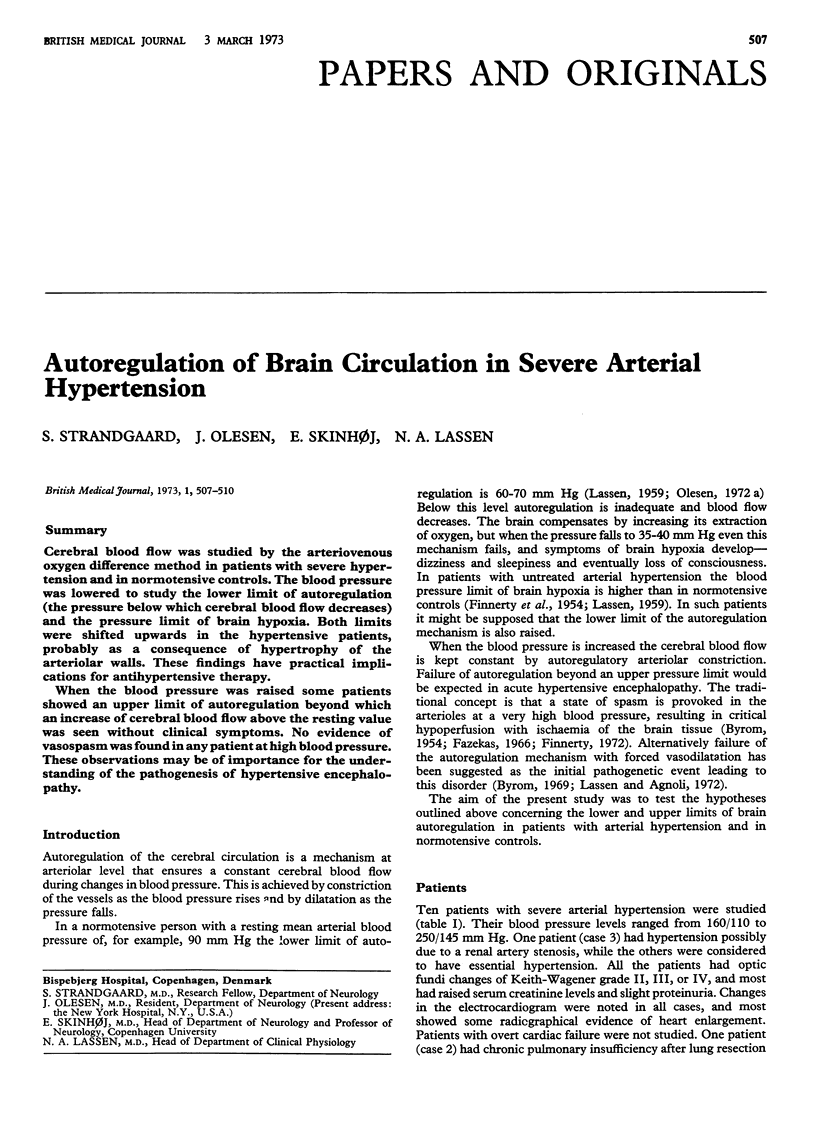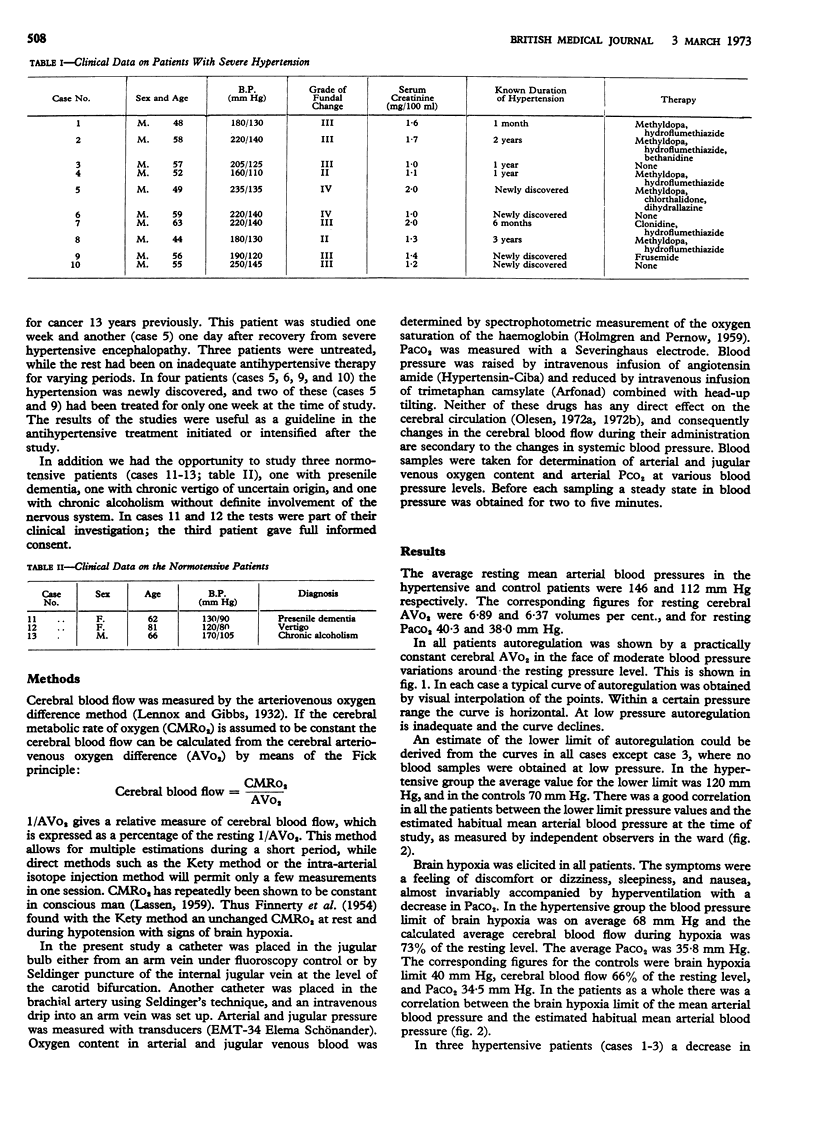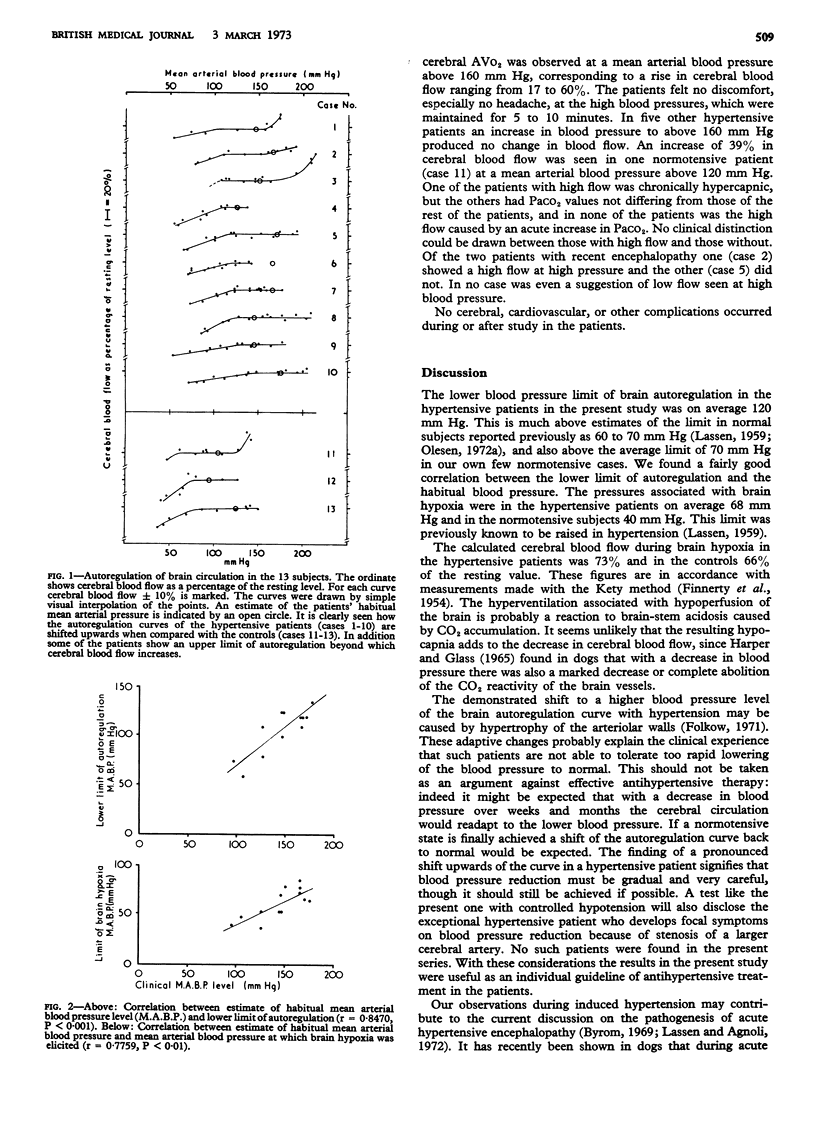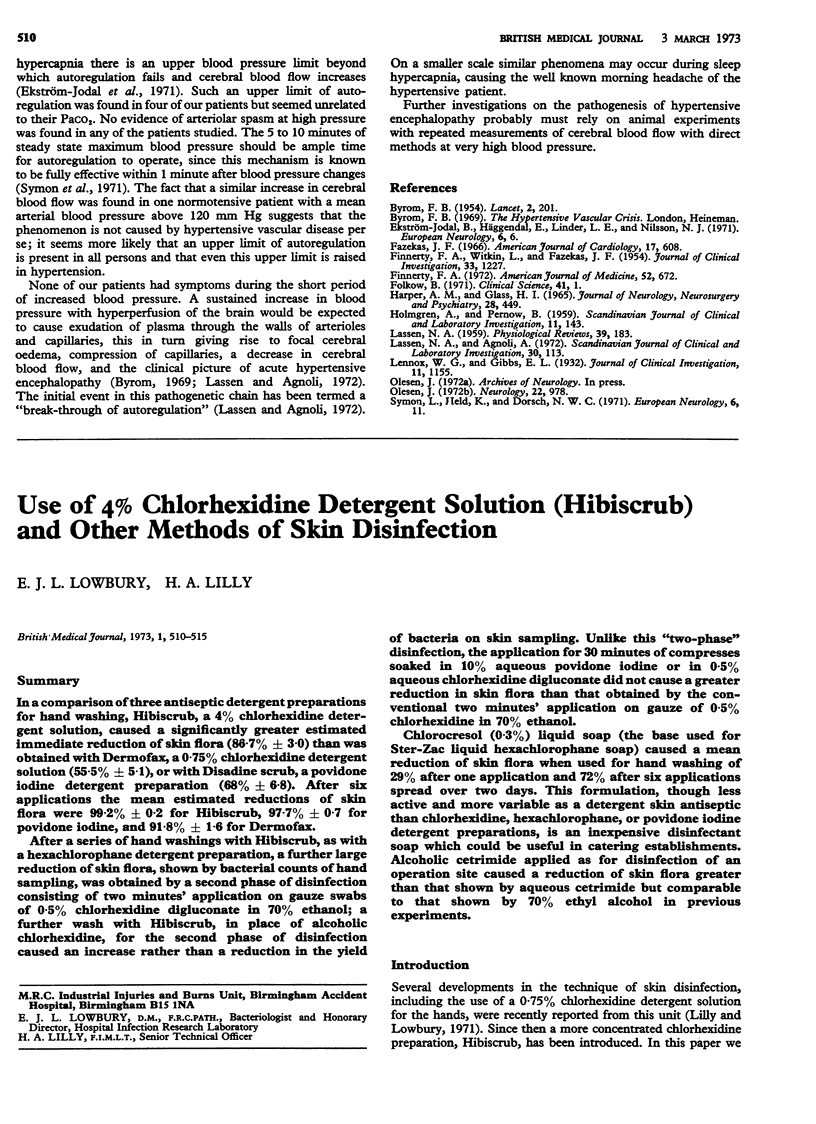Abstract
Cerebral blood flow was studied by the arteriovenous oxygen difference method in patients with severe hypertension and in normotensive controls. The blood pressure was lowered to study the lower limit of autoregulation (the pressure below which cerebral blood flow decreases) and the pressure limit of brain hypoxia. Both limits were shifted upwards in the hypertensive patients, probably as a consequence of hypertrophy of the arteriolar walls. These findings have practical implications for antihypertensive therapy.
When the blood pressure was raised some patients showed an upper limit of autoregulation beyond which an increase of cerebral blood flow above the resting value was seen without clinical symptoms. No evidence of vasospasm was found in any patient at high blood pressure. These observations may be of importance for the understanding of the pathogenesis of hypertensive encephalopathy.
Full text
PDF



Selected References
These references are in PubMed. This may not be the complete list of references from this article.
- BYROM F. B. The pathogenesis of hypertensive encephalopathy and its relation to the malignant phase of hypertension; experimental evidence from the hypertensive rat. Lancet. 1954 Jul 31;267(6831):201–211. doi: 10.1016/s0140-6736(54)91821-8. [DOI] [PubMed] [Google Scholar]
- Ekström-Jodal B., Häggendal E., Linder L. E., Nilsson N. J. Cerebral blood flow autoregulation at high arterial pressures and different levels of carbon dioxide tension in dogs. Eur Neurol. 1971;6(1):6–10. doi: 10.1159/000114457. [DOI] [PubMed] [Google Scholar]
- FINNERTY F. A., Jr, WITKIN L., FAZEKAS J. F. Cerebral hemodynamics during cerebral ischemia induced by acute hypotension. J Clin Invest. 1954 Sep;33(9):1227–1232. doi: 10.1172/JCI102997. [DOI] [PMC free article] [PubMed] [Google Scholar]
- Fazekas J. F. Cerebrovascular consequences of hypertension. Therapeutic implications. Am J Cardiol. 1966 May;17(5):608–611. doi: 10.1016/0002-9149(66)90393-6. [DOI] [PubMed] [Google Scholar]
- Finnerty F. A., Jr Hypertensive encephalopathy. Am J Med. 1972 May;52(5):672–678. doi: 10.1016/0002-9343(72)90057-5. [DOI] [PubMed] [Google Scholar]
- Folkow B. The haemodynamic consequences of adaptive structural changes of the resistance vessels in hypertension. Clin Sci. 1971 Jul;41(1):1–12. doi: 10.1042/cs0410001. [DOI] [PubMed] [Google Scholar]
- Harper A. M., Glass H. I. Effect of alterations in the arterial carbon dioxide tension on the blood flow through the cerebral cortex at normal and low arterial blood pressures. J Neurol Neurosurg Psychiatry. 1965 Oct;28(5):449–452. doi: 10.1136/jnnp.28.5.449. [DOI] [PMC free article] [PubMed] [Google Scholar]
- LASSEN N. A. Cerebral blood flow and oxygen consumption in man. Physiol Rev. 1959 Apr;39(2):183–238. doi: 10.1152/physrev.1959.39.2.183. [DOI] [PubMed] [Google Scholar]
- Lassen N. A., Agnoli A. The upper limit of autoregulation of cerebral blood flow--on the pathogenesis of hypertensive encepholopathy. Scand J Clin Lab Invest. 1972 Oct;30(2):113–116. doi: 10.3109/00365517209081099. [DOI] [PubMed] [Google Scholar]
- Lennox W. G., Gibbs E. L. THE BLOOD FLOW IN THE BRAIN AND THE LEG OF MAN, AND THE CHANGES INDUCED BY ALTERATION OF BLOOD GASES. J Clin Invest. 1932 Nov;11(6):1155–1177. doi: 10.1172/JCI100470. [DOI] [PMC free article] [PubMed] [Google Scholar]
- Olesen J. The effect of intracarotid epinephrine, norepinephrine, and angiotensin on the regional cerebral blood flow in man. Neurology. 1972 Sep;22(9):978–987. doi: 10.1212/wnl.22.9.978. [DOI] [PubMed] [Google Scholar]
- Raichle M. E., Stone H. L. Cerebral blood flow autoregulation and graded hypercapnia. Eur Neurol. 1971;6(1):1–5. doi: 10.1159/000114443. [DOI] [PubMed] [Google Scholar]


